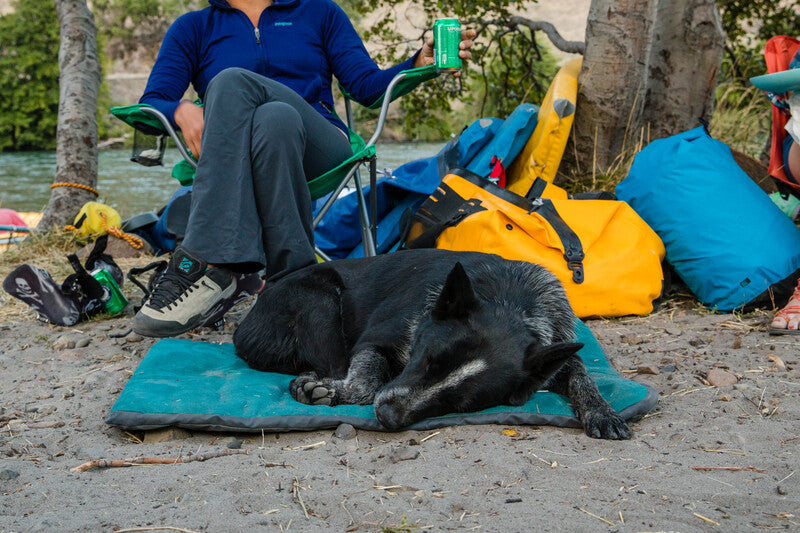
Tips for Camping with Pets
What could be better than camping? How about camping with your furry best friend? There’s just something perfect about hiking wooded trails while your pup splashes in streams or the two of you snuggling next to a fire while you cook up a camping gourmet delight. But before you start packing your gear, it would be wise to do a little planning so that your doggy camping daydream doesn’t turn into a doggy camping disaster.
- Plan Ahead: Before setting out for your trip, there are a few planning steps you’ll want to go through
- Visit the vet: Most campsites require records of pet vaccinations, so you’ll need to be sure your pet is up-to-date and that you have those records with you. You will also want to make sure your pet has heartworm meds as insects are likely to bite and that you have flea and tick prevention methods.
- Check the campgrounds: You should be sure that the areas you’re visiting allow pets and that you have reviewed pet regulations for the site. Most sites will have leash regulations (a six-foot leash is the standard), barking ordinances, and aggressive behavior regulations.
- Do a dry run: if your pet has never been camping before, it’s a good idea to practice trail discipline at home and to get them used to a tent environment. Set up a tent in your yard and let your pet get accustomed to this new environment.
- Have the right equipment: You will want to have food and water bowls as well as a good hiking-style water container (collapsible with attached bowl is good). Harnesses are preferred to collars so that pets are less likely to escape, and you can buy waterproof harnesses that are great for swimming as well as those that glow in the dark so you can more easily spot your pet at night. You will probably also want:
- A dog bed
- A stake to leash your pet to at the campsite
- Dog waste baggies
- ID tags with vaccination info (or microchip)
- Dog booties–especially in cold areas
- Dog first-aid kit
- Treats and toys
- Prescription pet medication
- Dog Food
- Map Your Route: Keep your pet in mind as you plan the drive to your destination.
- Stop sites: plan for ample bathroom stop sites as well as places to stroll so that your pet can exercise a bit, particularly on long trips.
- Pack toys: A bored pet can be a destructive pet, so having their favorite toys on a long ride can save you torn upholstery or mess.
- Practice Overheating Prevention: Don’t leave your pet unattended in a hot vehicle and be sure you have water and a bowl on hand for a quick drink.
- Keep your pet leashed: It’s not just regulation at most campsites, but it’s also the best way to keep your dog safe. Your pet may be friendly and well trained, but other animals may not be.
- Be Aware of Wildlife: It’s a good idea to know what local animal and plant life your pet might be exposed to. Buying guides to the flora and fauna of the area can be useful so that you can familiarize yourself with plants that may be poisonous or potential animal dangers.
- Never Leave Your Pet Unattended: Not only should your dog be leashed and tethered on site, but you shouldn’t leave your animal alone. Wandering wildlife, children, or other pets can spell trouble for you or your pet when you leave your animal alone.
- Plan for Fun: Pets get bored just like we do, so have plenty of toys on hand and plan outings that will be fun for your dog.
- Check for Ticks: Depending on weather, location, and time of year, you are likely to encounter ticks. Check your pet frequently (and yourself) for these creepy crawlies.
–
Ivan Young is a writer from Happy Writers, Co. in partnership with Walkin’ Pets pet mobility equipment.


Leave a comment